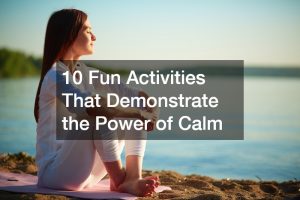One way to stay healthy and fit is by living an active lifestyle. This means incorporating physical activity into your daily routine, such as walking to work, taking the stairs instead of the elevator, and playing with your kids at the park. This lifestyle’s benefits include improved mental health, increased energy levels, and weight loss.
Reports show that people who live an active lifestyle are less likely to suffer from heart disease, stroke, cancer, and diabetes. However, there are some hidden dangers that come with being physically active. Here are a few things to watch out for and how you can avoid them.
Dehydration
Dehydration is one of the main dangers of living an active lifestyle. When you sweat, your body loses fluids and electrolytes, which are essential for proper hydration. If you don’t replace these fluids, you can become dehydrated.
Dehydration can cause headaches, fatigue, and muscle cramps. It can also lead to more serious problems, such as heat stroke or even death. To avoid dehydration, drink plenty of fluids before, during, and after exercising. Also, drink more fluids on hot days or when you’re sweating a lot.
If you’re exercising for more than an hour, you may need to drink a sports drink that contains electrolytes. Symptoms of dehydration include thirst, dark urine, dry mouth, and dizziness. If you experience these symptoms, stop exercising and drink fluids immediately.
It’s always a good idea to carry an insulated stainless steel water bottle filled with your favorite drink at all times. This reusable bottle doesn’t retain flavors, keeps your drink cold or hot for hours, and is eco-friendly. When buying one, choose a brand known for its high-quality, durable, toxin-free, BPA-free, and odor-free water bottles. Find one that already has a reputation for its high-quality water bottles and has a good refund and return policy if you have a problem with the product.
Heat Exhaustion
Another danger of living an active lifestyle is heat exhaustion. This can occur when you sweat excessively and lose too much body fluid. Symptoms of heat exhaustion include headache, nausea, vomiting, dizziness, and fainting. If you experience these symptoms, stop exercising and move to a cool, shady area.
Drink lots of fluids and remove any clothing that is damp with sweat. Apply cool compresses to your skin and fan yourself to help lower your body temperature. If your symptoms don’t improve within 30 minutes, call 911 or go to the nearest emergency room.
Many mistake heat exhaustion for dehydration. However, there are some key differences between the two. Dehydration occurs when you lose body fluids and don’t replace them. Heat exhaustion occurs when you sweat excessively and lose too much body fluid.
Exercise in cooler temperatures, like early morning or evening, to avoid heat exhaustion. Drink plenty of fluids and dress in light, loose-fitting clothing. On hot days, take frequent breaks in a cool, shady area.
Muscle Cramps

Muscle cramps are another common danger of living an active lifestyle. They occur when your muscles tighten and contract involuntarily. Muscle cramps can be excruciating and make it difficult to continue exercising.
To avoid muscle cramps, consider the following tips:
- Drink plenty of fluids
- Warm-up before exercising
- Stretch your muscles after exercising.
If you experience a muscle cramp, stop exercising and gently stretch the muscle. You can also massage the muscle and apply a heat pad to the area. Call your doctor if the cramp doesn’t go away after a few minutes.
Injury
Exercising can also lead to injuries, such as strains, sprains, and fractures.
- Fractures are breaks in the bone.
- Strains are injuries to the muscles or tendons
- Sprains are injuries to the ligaments.
Warming up before exercising and cool downing afterward can help in avoiding injuries. Also, wear proper footwear and don’t exercise on uneven surfaces. It also helps to wear protective gear like knee pads when participating in activities like skateboarding or rollerblading. If you play contact sports, consider a helmet and a mouthguard.
If you do injure yourself, stop exercising and seek medical attention. You can apply ice to the area for minor injuries and take over-the-counter pain medication. However, you’ll need to see a doctor for more severe injuries.
Overtraining
This refers to the point when you’re no longer getting the desired results from your exercise routine because you’ve been doing it for too long. Overtraining can lead to injuries, burnout, and a decrease in performance.
If you think you might be overtraining, take a few days off from exercising. Also, make sure to get enough rest and sleep. See a doctor if your symptoms don’t improve after a few days.
To avoid overtraining, mix up your exercise routine and don’t do the same thing every day. Also, take one or two days off from exercising each week. And listen to your body. If you’re feeling tired or sore, take a break.
The bottom line is that living an active lifestyle has many benefits. However, it’s essential to be aware of the dangers and take precautions to avoid them. By following the tips above, you can stay safe and healthy as you enjoy all the benefits of an active lifestyle.


